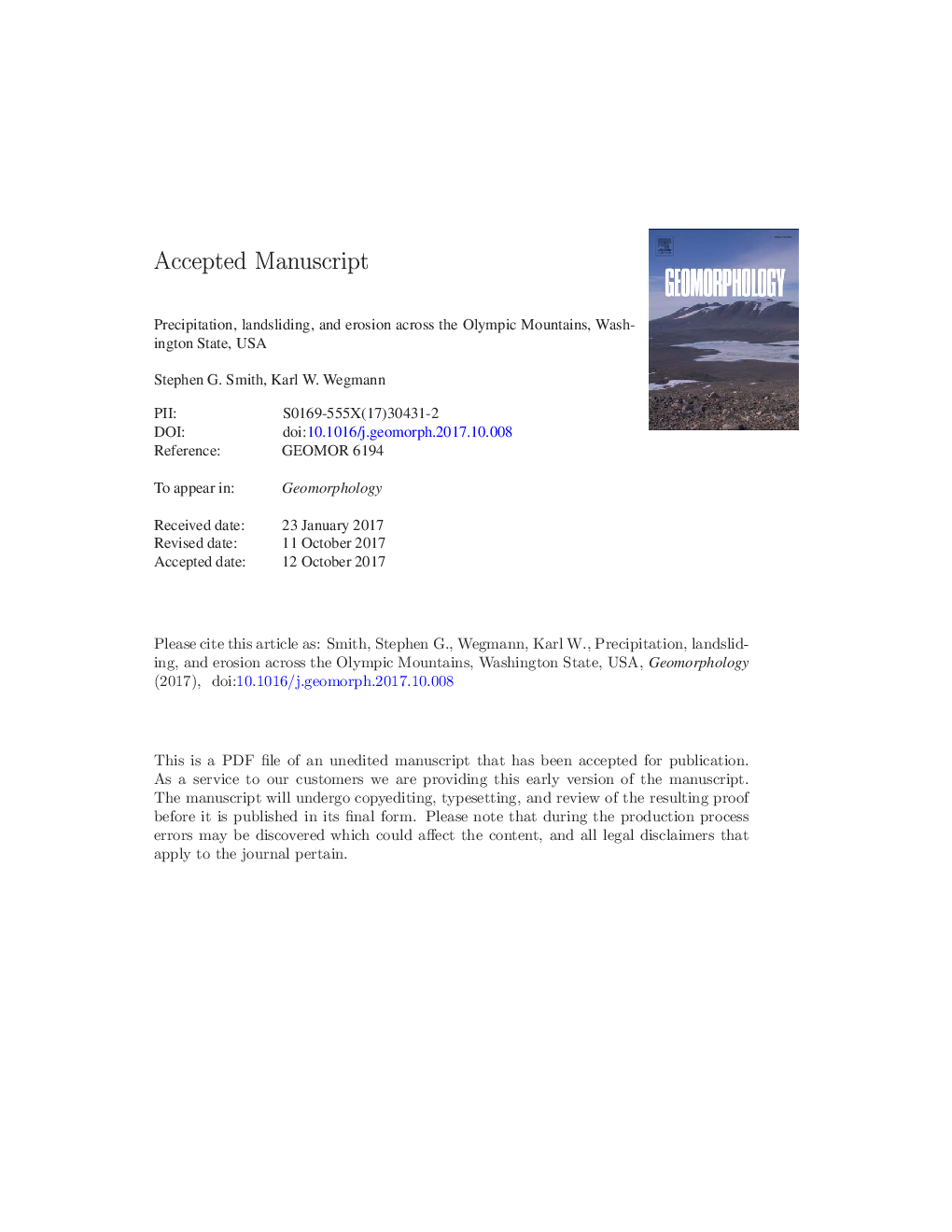| Article ID | Journal | Published Year | Pages | File Type |
|---|---|---|---|---|
| 8908305 | Geomorphology | 2018 | 47 Pages |
Abstract
In the Olympic Mountains of Washington State, landsliding is the primary surface process by which bedrock and hillslope regolith are delivered to river networks. However, the relative importance of large earthquakes versus high magnitude precipitation events to the total volume of landslide material transported to valley bottoms remains unknown in part due to the absence of large historical earthquakes. To test the hypothesis that erosion is linked to precipitation, approximately 1000 landslides were mapped from Google Earth imagery between 1990 and 2015 along a ~ 15 km-wide Ã ~ 85 km-long (1250 km2) swath across the range. The volume of hillslope material moved by each slide was calculated using previously published area-volume scaling relationships, and the spatial distribution of landslide volume was compared to mean annual precipitation data acquired from the PRISM climate group for the period 1981-2010. Statistical analysis reveals a significant correlation (r = 0.55; p < 0.001) between total landslide volume and mean annual precipitation, with 98% of landslide volume occurring along the windward, high-precipitation side of the range during the 25-year interval. Normalized to area, this volume yields a basin-wide erosion rate of 0.28 ± 0.11 mm yrâ 1, which is similar to previous time-variable estimates of erosion throughout the Olympic Mountains, including those from river sediment yield, cosmogenic 10Be, fluvial terrace incision, and thermochronometry. The lack of large historic earthquakes makes it difficult to assess the relative contributions of precipitation and seismic shaking to total erosion, but our results suggest that climate, and more specifically a sharp precipitation gradient, plays an important role in controlling erosion and landscape evolution over both short and long timescales across the Olympic Mountains.
Related Topics
Physical Sciences and Engineering
Earth and Planetary Sciences
Earth-Surface Processes
Authors
Stephen G. Smith, Karl W. Wegmann,
